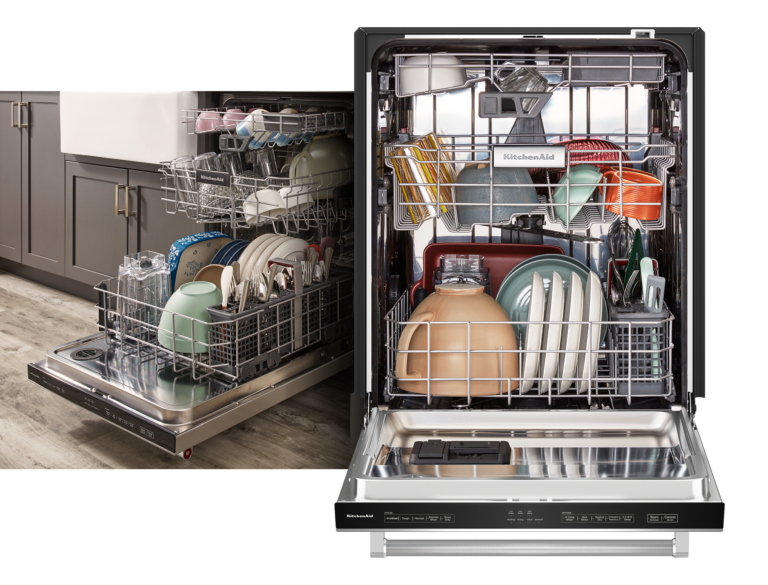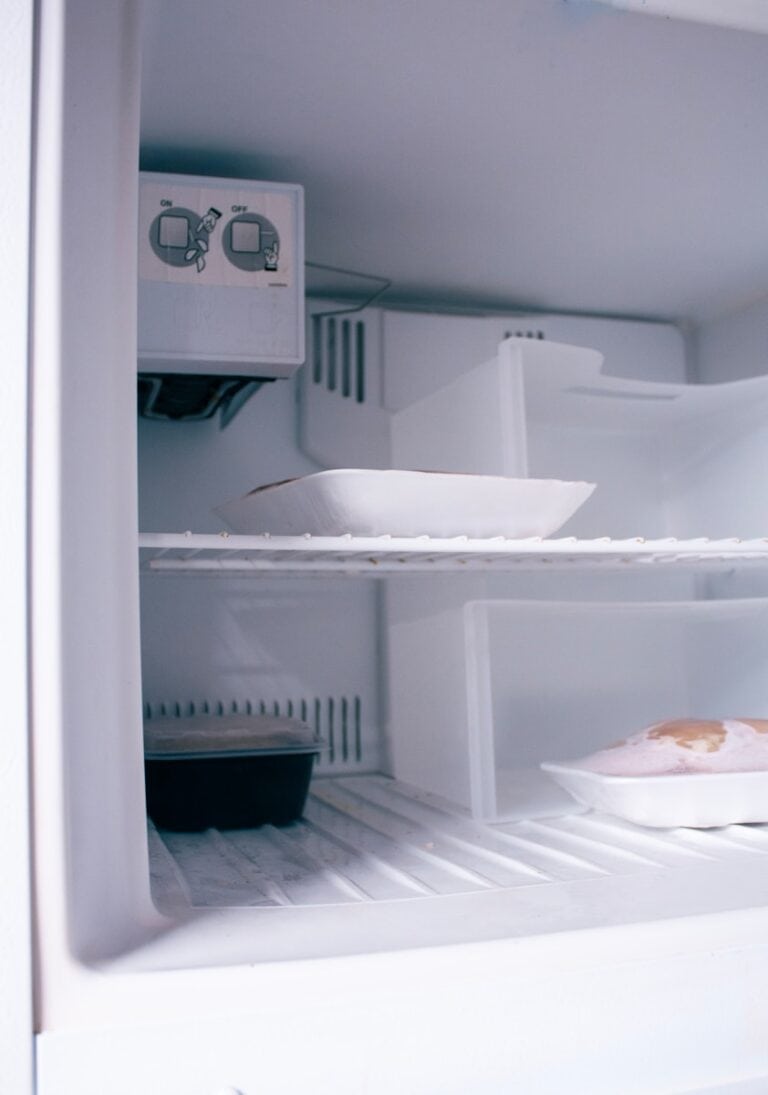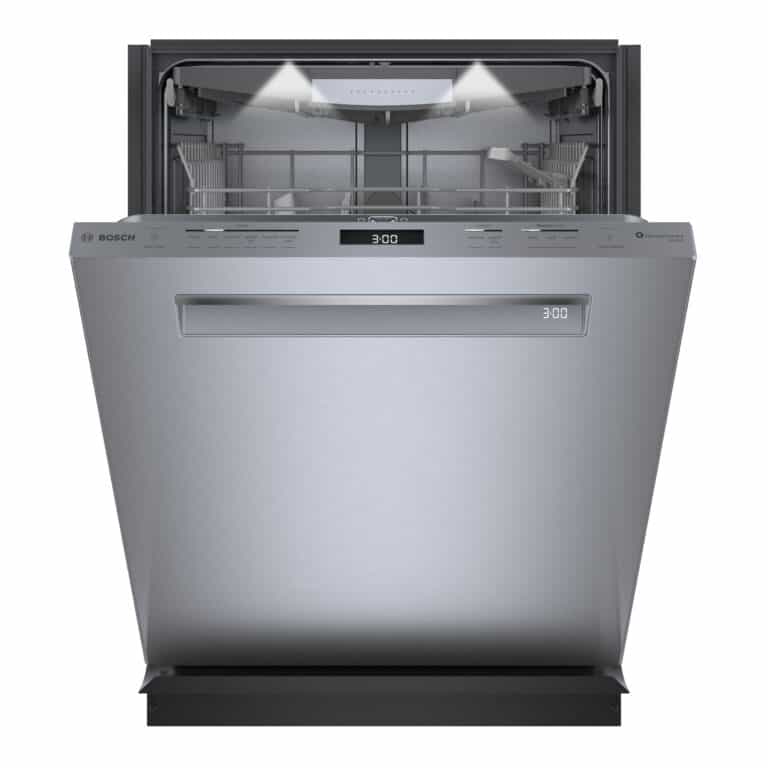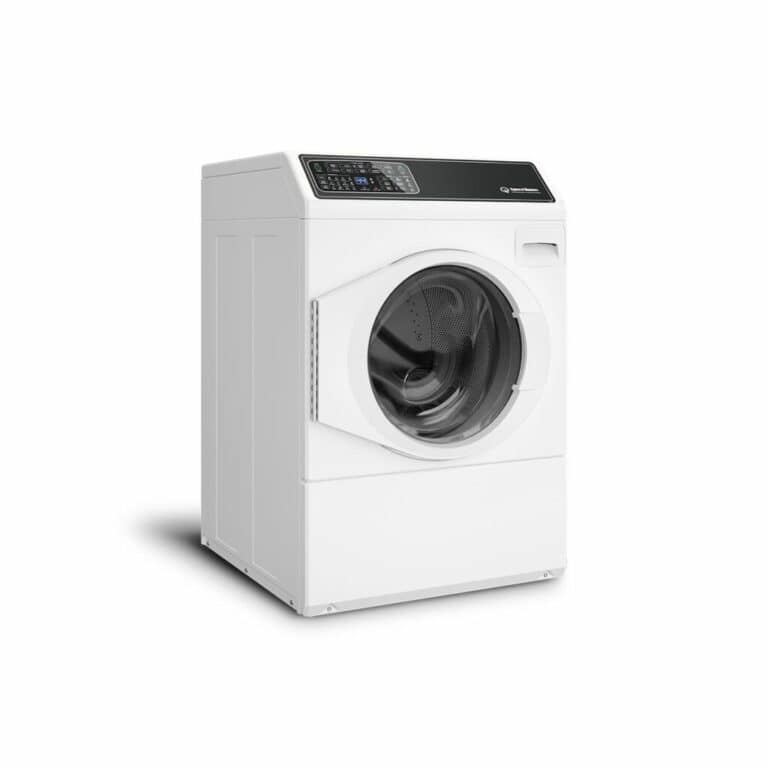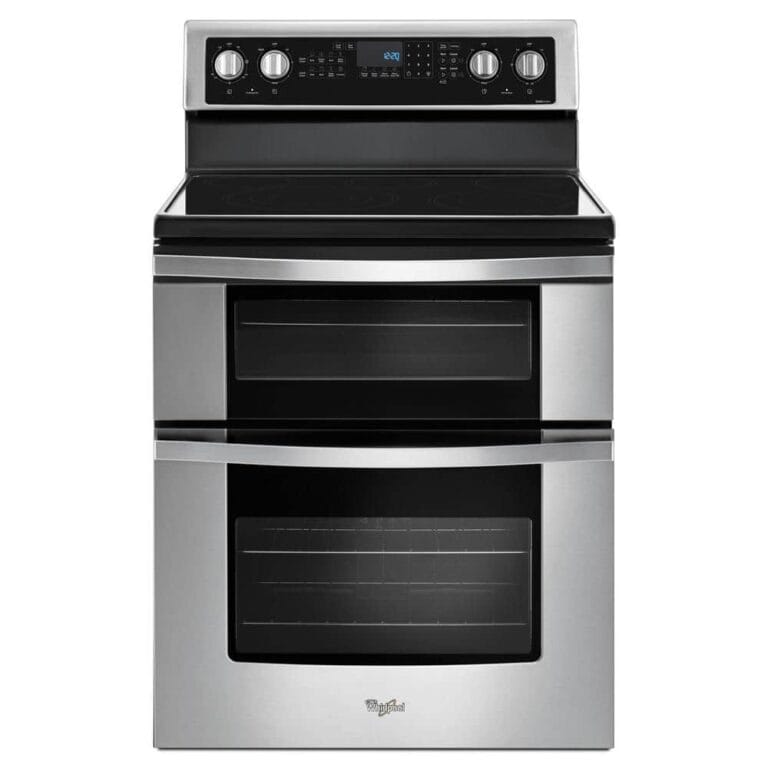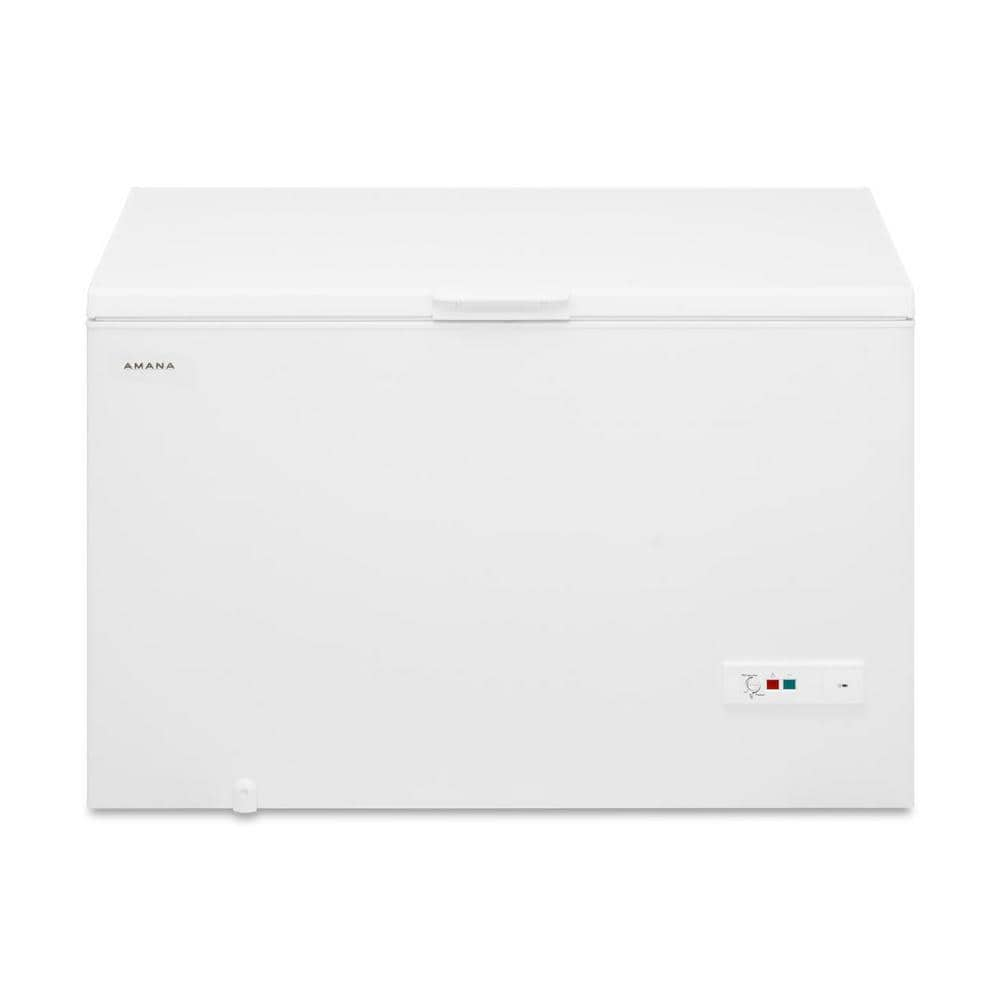
Is your freezer feeling more like a cool box than a freezing unit? It’s frustrating when you find melting ice cream or thawing meat in your freezer. A freezer that’s cold but not freezing properly is often caused by one of five common issues: air leaks from door seals, dirty condenser coils, blocked evaporator fans, faulty evaporator fans, or low coolant levels.
When your freezer stops freezing items properly, you might notice it still feels cold to the touch. This happens because the temperature is below room temperature but not cold enough to freeze things. Many people find that unplugging their freezer for a while solves the problem temporarily, which suggests a defrost system failure might be the culprit.
Before calling a repair technician, check for air escaping through damaged door seals or inspect for ice buildup that might indicate coolant issues. Simple maintenance like cleaning the condenser coils can sometimes restore proper cooling function without expensive repairs.
Reasons Why a Freezer Is Not Cooling
When your freezer stops freezing properly, it’s often due to a few common issues. Below are the most likely causes and how to troubleshoot them.
1. Power Supply Problems
Symptoms: The freezer isn’t running at all — no lights, hum, or fan noise.
Causes & Fixes:
- Check the plug and outlet: Make sure the freezer is firmly plugged in and the outlet is working.
- Inspect the circuit breaker: Reset if tripped.
- Test the power cord: Look for visible damage or fraying.
2. Incorrect Temperature Settings
Symptoms: The freezer feels cool but not freezing.
Causes & Fixes:
- Ensure the thermostat is set to 0°F (-18°C) or lower.
- If the temperature dial was accidentally changed, reset it and allow 24 hours for the temperature to stabilize.
- A faulty thermostat or thermistor may fail to signal the compressor to run — these may need replacement.
(source: The Spruce)
3. Dirty Condenser Coils
Symptoms: The freezer runs constantly but doesn’t get cold enough.
Causes & Fixes:
- Dust and debris on condenser coils prevent heat from dissipating.
- Unplug the freezer and gently vacuum or brush the coils (usually located on the back or underneath).
(source: ApplianceUpdate)
4. Blocked Air Vents or Overcrowding
Symptoms: Uneven cooling or frost buildup in one area.
Causes & Fixes:
- Air vents inside the freezer must stay clear for proper air circulation.
- Avoid overpacking the freezer; leave space for air to flow between items.
(source: NC Appliance Repair)
5. Faulty Door Seal (Gasket)
Symptoms: Frost buildup, condensation, or warm air leaking in.
Causes & Fixes:
- Check for cracks, warping, or gaps in the rubber seal.
- Test by closing the door on a piece of paper — if it slides out easily, the seal is weak.
- Clean the gasket with warm, soapy water or replace it if damaged.
(source: NC Appliance Repair)
6. Defective Evaporator Fan
Symptoms: Freezer feels warm even though the compressor runs.
Causes & Fixes:
- The evaporator fan circulates cold air. If it’s broken or blocked by ice, air won’t move properly.
- Open the freezer and listen — if the fan isn’t spinning, it might need replacement.
(source: BestDaily)
7. Defrost System Failure
Symptoms: Ice buildup on the evaporator coils.
Causes & Fixes:
- A malfunctioning defrost timer, heater, or thermostat can cause frost to accumulate, blocking airflow.
- Defrost the freezer manually and check the components with a multimeter if you’re comfortable doing so.
8. Compressor or Start Relay Issues
Symptoms: Freezer not cooling at all, but the light works.
Causes & Fixes:
- The compressor is the heart of the cooling system. If it’s not running, the start relay or compressor itself may be faulty.
- Listen for a clicking sound — that often signals a bad relay.
- These repairs usually require a professional technician.
(source: Bob Vila)
9. Thermistor or Temperature Sensor Fault
Symptoms: Inconsistent cooling or freezer cycling irregularly.
Causes & Fixes:
- The thermistor monitors internal temperature and signals the control board.
- If defective, the compressor won’t turn on when needed.
- Replace the thermistor if testing shows incorrect resistance readings.
(source: The Spruce)
🧰 When to Call a Professional
If you’ve checked all the above and your freezer still isn’t cooling, it may be time to contact an appliance repair technician. Problems with sealed systems, refrigerant leaks, or control boards require specialized tools and expertise.
✅ Quick Maintenance Tips
- Clean coils twice a year.
- Avoid overloading the freezer.
- Keep the door closed as much as possible.
- Check gaskets regularly for wear.
In summary: A freezer that’s not cooling can often be fixed by addressing airflow, cleaning coils, or replacing simple parts like the thermostat or gasket. However, if the compressor or sealed system is at fault, professional service is the best route.
Key Takeaways
- Check door seals and clean condenser coils as first steps in troubleshooting a freezer that’s not cold enough.
- A freezer that’s cold but not freezing properly often indicates low coolant levels or a defrost system failure.
- Temporarily unplugging your freezer may resolve the issue, but persistent problems typically require professional repair service.
Understanding Freezer Operations
Freezers maintain their cold temperatures through a complex refrigeration cycle that depends on multiple components working together. When any part of this system fails, your freezer stops freezing properly.
Components and Functions
The freezer cooling system consists of several critical parts that work together to maintain low temperatures. The compressor pumps refrigerant through the system, while the condenser coils release heat from inside the freezer to the outside environment.
The evaporator fan circulates cold air throughout the freezer compartment. When this fan is blocked or fails, cold air cannot move properly, causing temperature inconsistencies.
The condenser coils are crucial for heat dissipation. Dirty coils prevent efficient heat transfer, forcing the system to work harder and potentially fail to maintain proper temperatures.
Modern freezers also include an auto-defrost system that prevents frost buildup which can block air vents and reduce cooling efficiency.
Optimal Freezer Temperature
The ideal freezer temperature should be maintained at 0°F (-18°C) or below. At this temperature, food preservation is maximized and bacterial growth is effectively halted.
Temperature fluctuations can indicate problems with the cooling system. A freezer that feels cold but doesn’t actually freeze items is typically running at temperatures above 32°F (0°C).
Digital thermometers provide the most accurate readings for monitoring freezer temperatures. Placement matters—temperature can vary throughout the freezer compartment, with door areas typically being warmer than the back.
Overpacking a freezer restricts airflow and creates temperature inconsistencies. Proper spacing between items allows cold air to circulate effectively around all food items.
Common Causes of Cooling Issues
When a freezer stops cooling properly, several underlying problems may be responsible. These issues often relate to how air circulates within the appliance and the buildup of ice that can interfere with normal operation.
Obstructed Airflow
Proper airflow is essential for freezer cooling performance. When air cannot circulate freely, cooling efficiency decreases dramatically. Blocked vents prevent cold air from reaching all areas of the freezer, creating warm spots where food may thaw.
Overpacking the freezer is a common culprit. When items are stacked against walls or vents, they restrict airflow throughout the compartment. This forces the freezer to work harder while achieving poorer results.
The condenser coils also play a critical role in cooling. These coils release heat from inside the freezer to the surrounding environment. When covered with dirt or dust, they cannot dissipate heat properly.
A malfunctioning evaporator fan can also cause cooling issues since it’s responsible for circulating air through the freezer cabinet. Without proper air movement, cooling becomes uneven or insufficient.
Frost Buildup Impacts
Frost buildup inside a freezer can significantly impact its cooling ability. Excessive ice accumulation on evaporator coils insulates them, preventing efficient heat transfer and reducing cooling capacity.
Many modern freezers have automatic defrost cycles to prevent this problem. When these systems fail, ice gradually accumulates until it interferes with normal operation. Signs of a defrost system failure include:
- Visible ice buildup on the back wall
- Uneven cooling throughout the freezer
- Unusual noises during operation
Door seal issues also contribute to frost problems. When seals are damaged or doors don’t close properly, warm, humid air enters the freezer and creates frost. This not only affects cooling efficiency but also makes the compressor work harder.
Regular defrosting and maintenance can prevent these issues. For manual defrost freezers, scheduling quarterly defrosting helps maintain optimal performance and prevents excessive ice accumulation.
Refrigerator Components’ Health
The cooling power of your freezer depends heavily on several key components functioning properly. When these parts fail or get dirty, your freezer temperature can rise quickly.
Dirty Condenser Coils
Condenser coils play a crucial role in removing heat from your refrigerator system. These coils, typically located either behind or underneath the refrigerator, release heat extracted from inside the appliance. When these coils become covered with dirt, they cannot dissipate heat efficiently.
The result is a freezer that works harder but cools less effectively. Dirty coils force the compressor to run longer cycles, increasing energy consumption and reducing cooling capacity.
Cleaning these coils should be done approximately every 6-12 months, depending on household conditions. Homes with pets may require more frequent cleaning due to hair accumulation.
How to clean condenser coils:
- Unplug the refrigerator
- Locate the coils (usually at the back or underneath)
- Use a coil brush or vacuum with brush attachment
- Gently remove dust and debris
Faulty Evaporator Fan
The evaporator fan circulates cold air from the freezer throughout the refrigerator. When this fan malfunctions, cold air movement stops, causing inadequate cooling. A blocked evaporator fan is one of the most common causes of freezer cooling problems.
Signs of a failing evaporator fan include:
- Unusual noises (clicking, scraping)
- Freezer temperature fluctuations
- Frost buildup in certain areas
The fan motor can wear out over time or become obstructed by ice buildup. Ice accumulation around the fan often indicates other underlying issues like a defrost system failure.
Fan replacement is typically necessary when the motor fails. This repair usually requires professional service, though experienced DIYers might handle it with proper guidance.
Evaporator Coils State
Evaporator coils absorb heat from the air inside the refrigerator. These coils should remain frost-free in modern refrigerators with automatic defrost systems. When these coils become coated with ice or frost, airflow becomes restricted.
Frost buildup on evaporator coils often indicates a malfunctioning defrost system. The defrost heater, timer, or control board may have failed, preventing the normal defrost cycle.
Excessive frost creates an insulating barrier that prevents the coils from properly absorbing heat. This condition forces the compressor to work continuously while providing less cooling.
Testing the defrost components requires a multimeter and some technical knowledge. Many modern refrigerators also have diagnostic modes that can help identify defrost system failures.
Mechanical Problems
When your freezer isn’t cooling properly, mechanical issues are often the culprit. These problems typically involve either the refrigerant that circulates through the system or the fans that distribute cold air.
Refrigerant Leak Concerns
Refrigerant is the lifeblood of your freezer’s cooling system. It circulates through coils, changing from gas to liquid and back again, absorbing and releasing heat in the process. When there’s a refrigerant leak, your freezer gradually loses its ability to cool.
Signs of a refrigerant leak include:
- Freezer temperature rising over time
- Hissing sounds from the back of the unit
- Oily residue near coils or connections
Testing for leaks requires professional equipment. If you suspect a refrigerant issue, it’s best to call a technician. DIY repairs aren’t recommended as refrigerants can be hazardous and require special handling.
The cost to fix a refrigerant leak typically ranges from $200-$400, depending on the severity and accessibility of the leak.
Freezer Fan Functionality
Your freezer relies on two critical fans: the evaporator fan and the condenser fan. The evaporator fan distributes cold air throughout the freezer, while the condenser fan cools the compressor and condenser coils.
When either fan malfunctions, cooling problems quickly follow. Listen for unusual noises or check for visible obstructions. A working fan should spin freely with no grinding sounds.
Common fan problems include:
- Motor failure
- Broken blades
- Ice buildup preventing movement
- Worn bearings causing noise
To check the evaporator fan, open your freezer door and listen. The fan should run when the door is closed (test by manually pressing the door switch). For the condenser fan, located near the compressor, unplug the unit before inspection to avoid injury.
Replacement fans cost $20-$100, plus labor if professionally installed.
User Interfaces and Controls
Modern freezers rely on digital interfaces and control systems to manage temperature and other functions. When these systems fail, they can be a common reason why a freezer stops cooling properly.
Temperature Controls Examination
Start by checking if your freezer’s control panel is responding. If the display is blank or unresponsive, this could indicate a power or electronic issue. Try performing a power reset by unplugging the freezer from the wall outlet for about 5 minutes, then plugging it back in to see if the interface resets.
Some freezers have a main control or user interface board that can malfunction. These electronic components control the cooling system and may need replacement if damaged.
Check for any error codes displayed on the control panel. Most modern freezers have diagnostic systems that can pinpoint problems. Refer to your owner’s manual to interpret these codes.
Moisture can damage electronic components. Inspect for signs of water damage or condensation near the control panel. Keep the area dry to prevent shorting of electronic circuits.
In some cases, the temperature-monitoring devices themselves may fail. These sensors tell the control board when to turn the cooling system on and off.
Replacing a faulty user interface can be expensive. Some models may cost upwards of $275 for the part alone. Consider consulting a professional to diagnose electronic control issues before making this investment.
Recommended Practices for Freezer Use
Maintaining the proper functioning of your freezer requires consistent attention to how it’s used day-to-day. Simple habits can significantly improve cooling efficiency and extend the life of your appliance.
Effective Food Storage
Keep your freezer at least 70% full for optimal temperature regulation. A well-stocked freezer helps maintain cold temperatures more effectively than an empty one. If it’s not full, placing bags of ice can help fill empty spaces.
Allow hot foods to cool before freezing them. Placing hot items directly in the freezer forces the appliance to work harder and can temporarily raise the internal temperature.
Proper packaging is essential:
- Use airtight containers or freezer bags
- Remove excess air before sealing
- Label items with contents and dates
Organize items strategically by keeping frequently used foods near the front. This reduces the time the door stays open when retrieving items.
Leave small spaces between packages to allow cold air circulation. Tightly packed items that block air flow can create warm spots in the freezer compartment.
Frequently Asked Questions
Freezer issues can stem from several common problems that affect cooling performance. Many of these problems have simple solutions that homeowners can troubleshoot themselves.
What could be the reason for a freezer to stop freezing while the refrigerator compartment remains cold?
When your freezer stops freezing but the refrigerator still works, it often indicates a problem with cold air circulation. Ice buildup can restrict airflow between compartments.
A blocked or faulty evaporator fan might be unable to circulate cold air throughout the freezer cabinet. This fan is crucial for moving cold air from the cooling coils to the freezer area.
Low refrigerant levels can also cause this problem, as the system may have enough cooling power for the refrigerator but not enough for the colder freezer temperatures.
How do you diagnose a freezer that is not maintaining the appropriate temperature?
First, check the temperature settings to ensure they haven’t been accidentally changed. The ideal freezer temperature should be around 0°F (-18°C).
Inspect the door seals for any cracks, tears, or food debris that might be allowing air to escape. A simple test involves placing a dollar bill in the door as you close it—if it pulls out easily, the seal needs replacement.
Listen for the condenser fan running when the compressor is on. If it’s silent, this could indicate a fan motor failure.
Examine the condenser coils for dirt buildup. Dirty coils prevent efficient heat transfer and reduce cooling capacity.
What are the steps to reset a freezer that isn’t cooling properly?
Unplug the freezer from the power source for about 30 minutes. This allows the system to completely shut down and can sometimes reset the internal components.
Check the temperature control dial and ensure it’s set properly after reconnecting power. Sometimes the dial gets bumped to a warmer setting accidentally.
For digital models, consult the owner’s manual for specific reset procedures. Many modern freezers have special reset sequences that involve pressing certain button combinations.
Allow 24 hours for the freezer to reach proper temperature after a reset before determining if further action is needed.
What would cause a light to remain on in a freezer that is not cooling?
A freezer light that stays on constantly can generate heat, interfering with cooling efficiency. This usually indicates a faulty door switch that fails to turn off the light when the door closes.
The door switch can be tested with a multimeter to check for continuity. If it doesn’t click or change state when pressed, it likely needs replacement.
In some cases, the light staying on points to alignment issues with the door. Check if the door is closing completely and if the hinges need adjustment.
How can an upright freezer be repaired if it is not freezing correctly?
Check the door alignment and seals first, as upright freezers are particularly susceptible to air leaks due to their design. The door may need adjustment or the gaskets might require replacement.
Clean the condenser coils which are typically located at the back or bottom of the unit. Dust and debris can significantly reduce cooling efficiency.
Ensure nothing is blocking the internal vents in an upright freezer. Items placed too close to vents can restrict airflow and create warm spots.
If these steps don’t resolve the issue, the evaporator fan may need replacement by a qualified technician.
What troubleshooting methods should be followed if a deep freezer is experiencing cooling issues?
Start by checking the power supply. Ensure the deep freezer is properly plugged in and the circuit breaker hasn’t tripped. Some models have a power indicator light to confirm power is reaching the unit.
Make sure the freezer isn’t overcrowded. Proper air circulation requires some space between items, especially around cooling vents.
Check if there’s excessive frost buildup on the interior walls. This can indicate a defrost system failure that requires professional attention.
Listen for unusual noises that might indicate compressor problems. A buzzing or clicking sound without the compressor starting could signal electrical issues.


